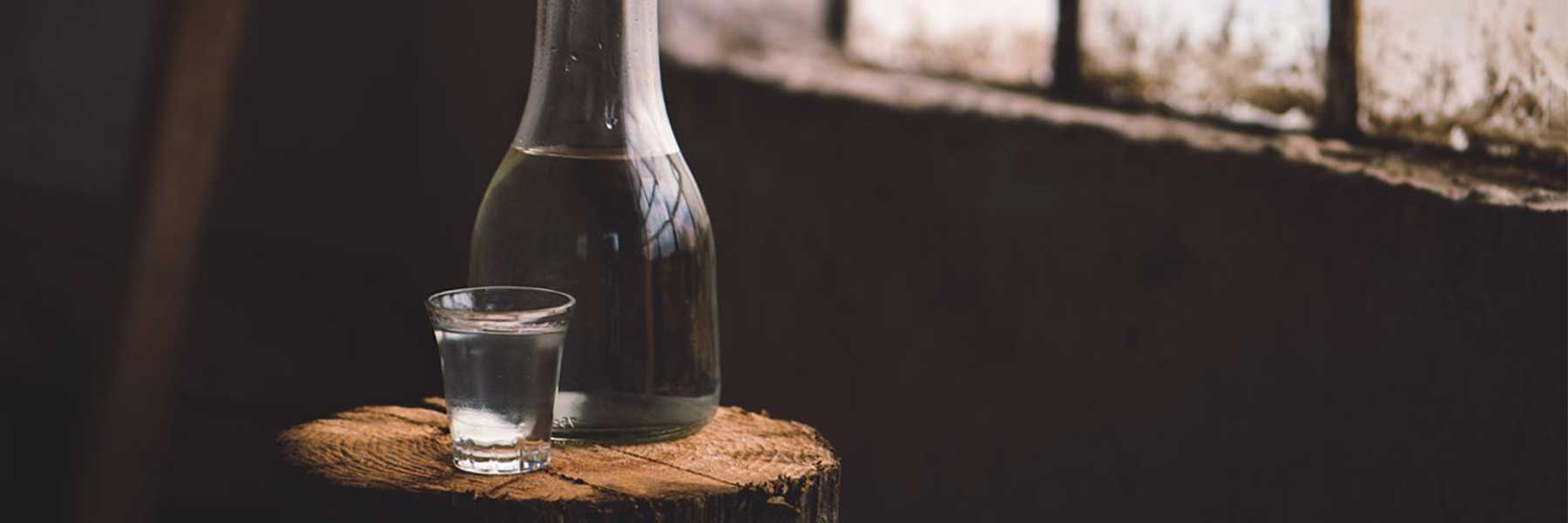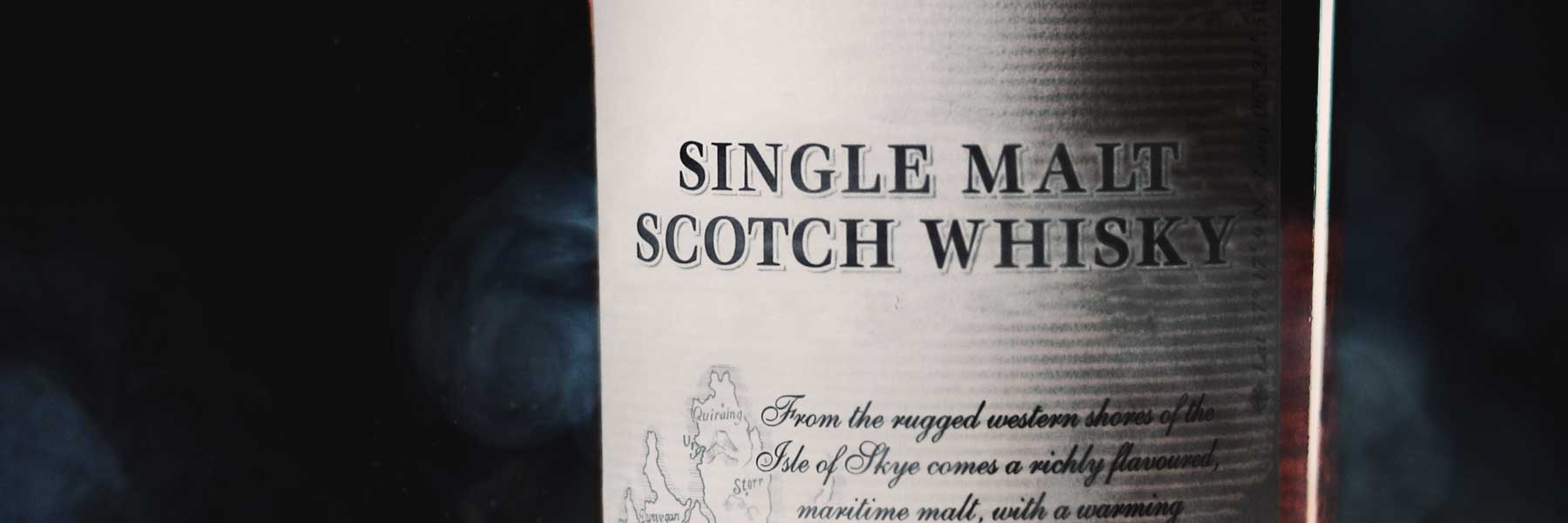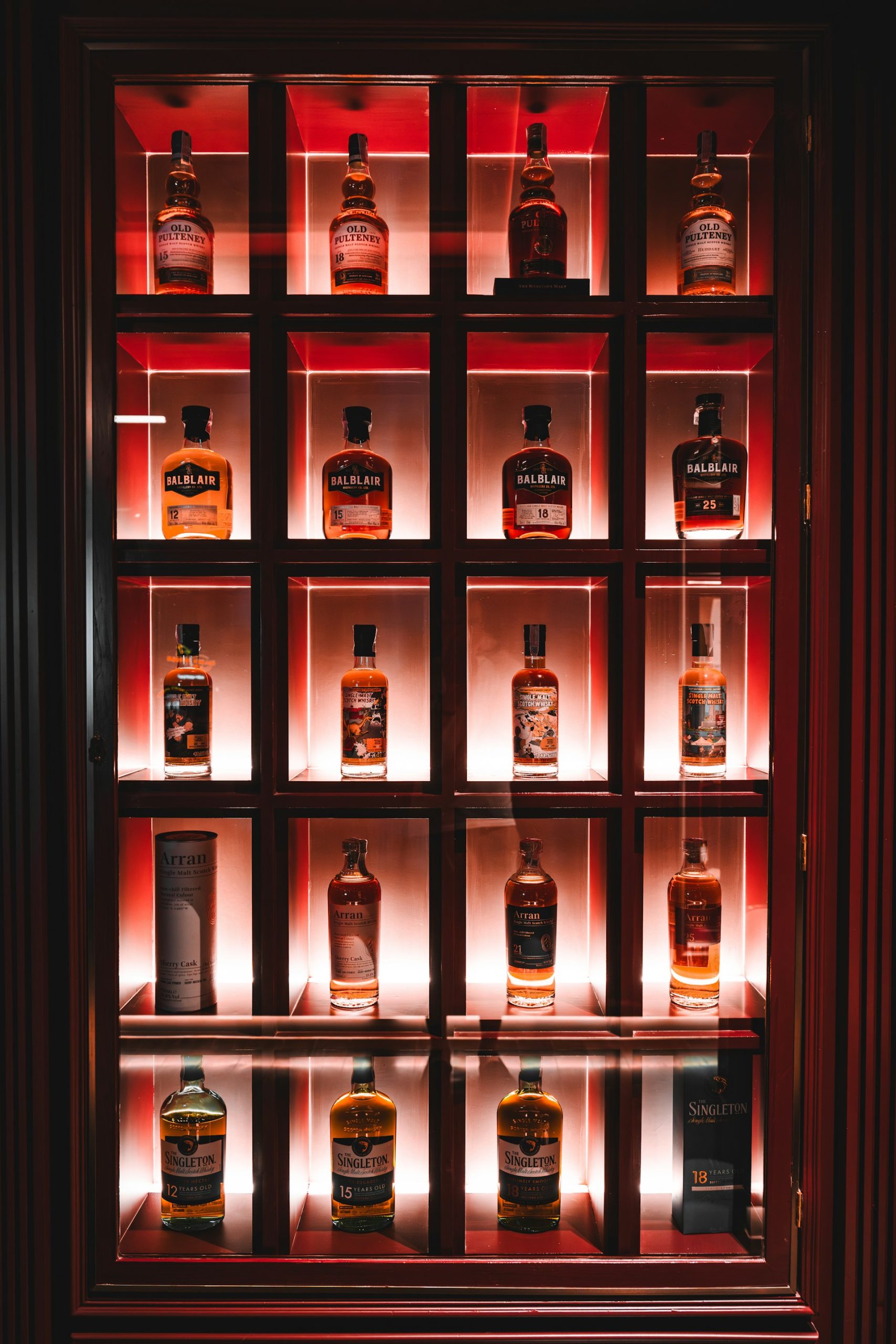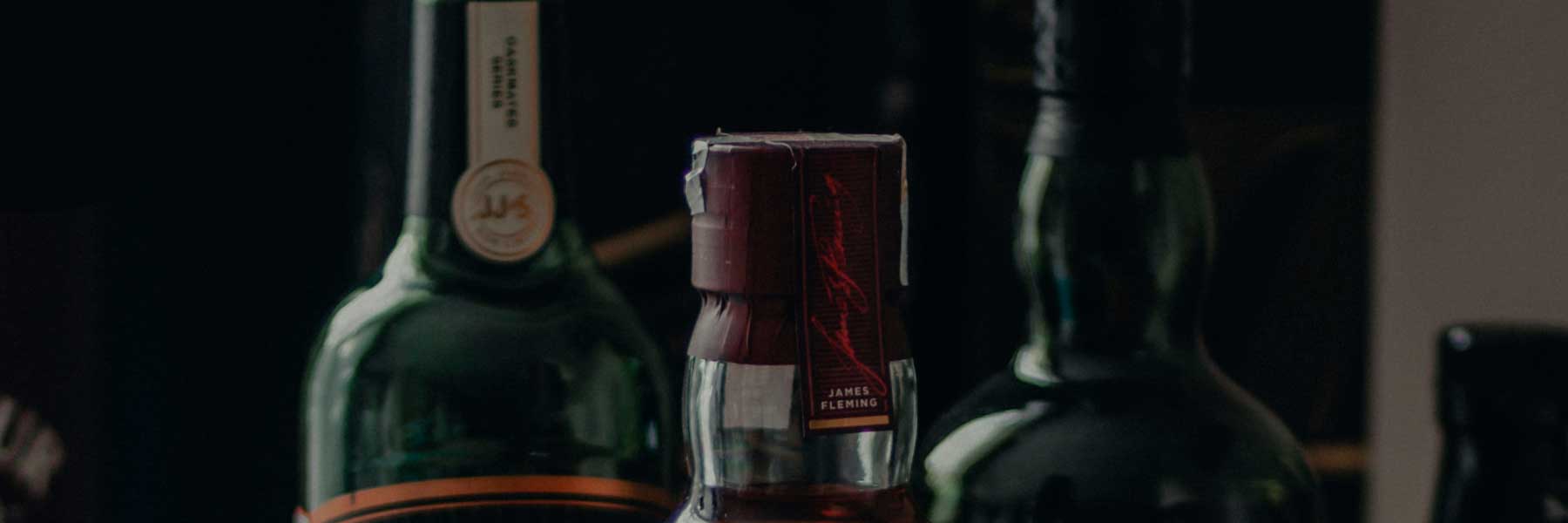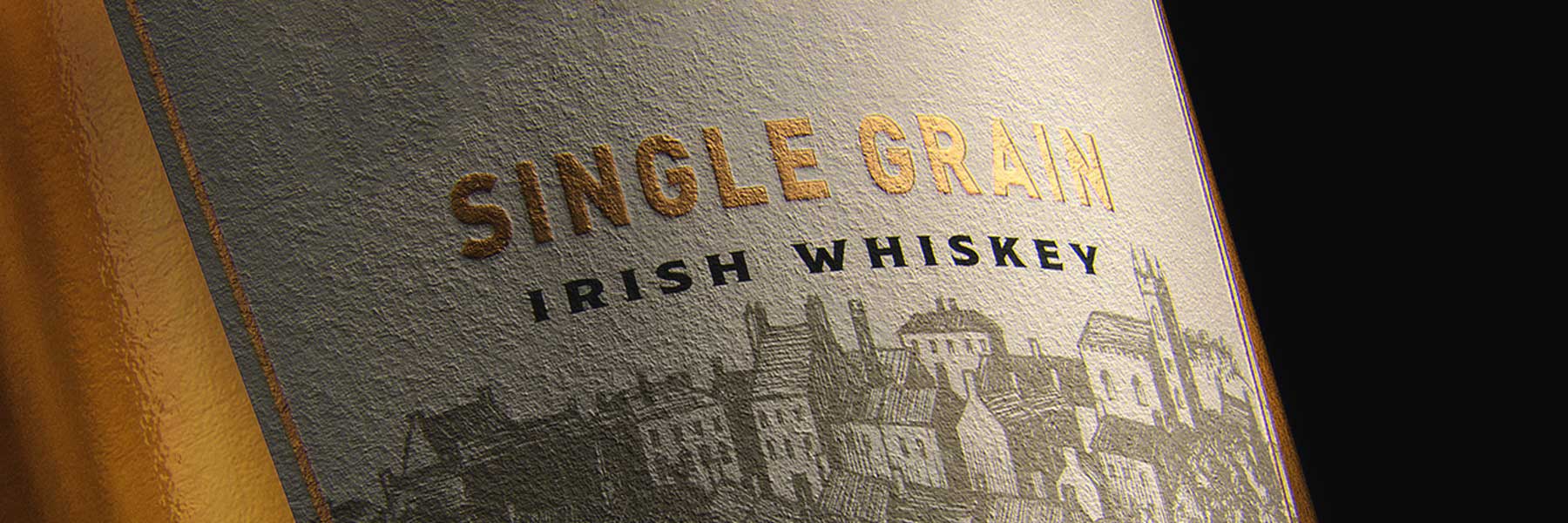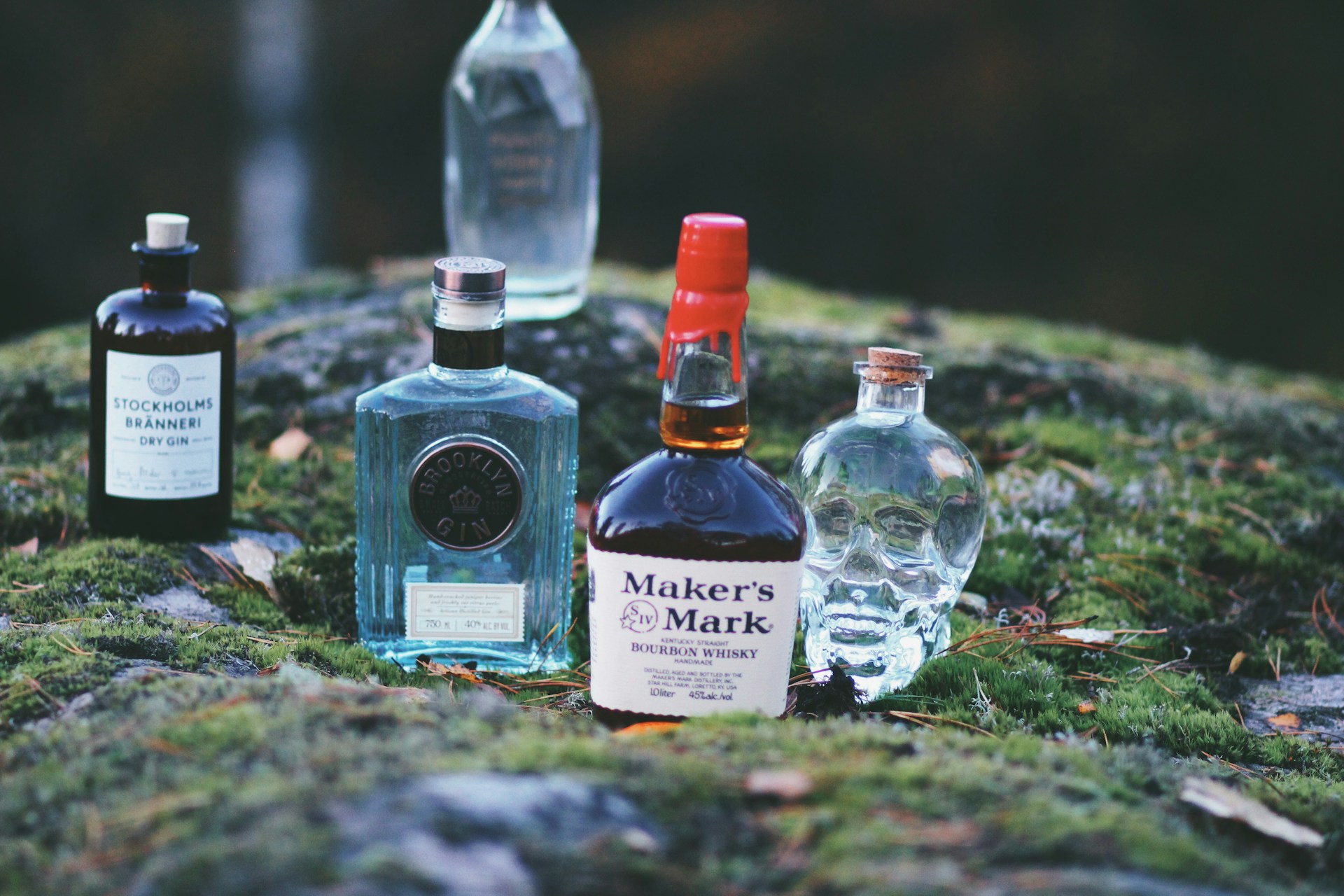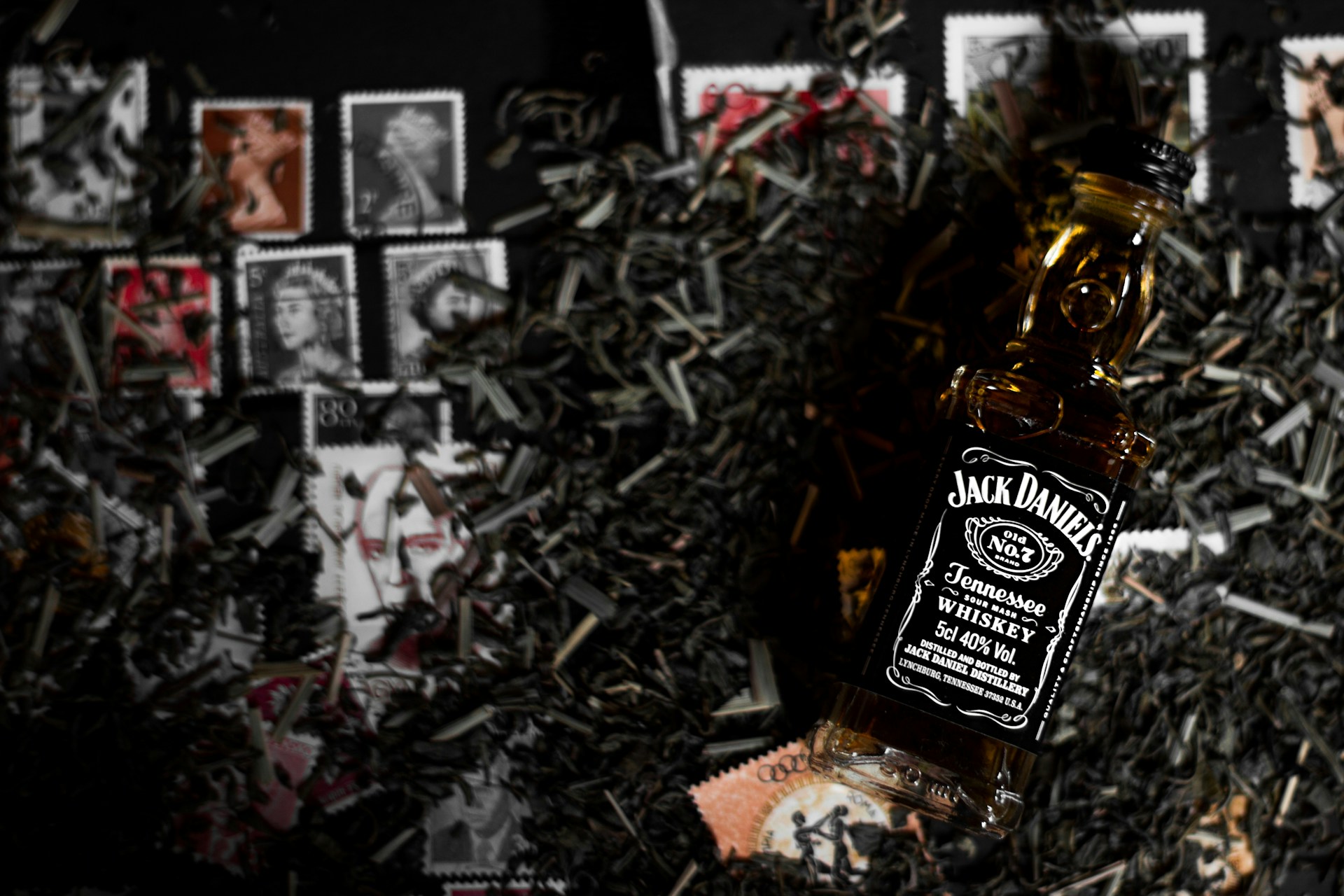What is Poitín?
Last updated on August 13th, 2024
A traditional, non-aged Irish spirit made illicitly by unregulated distillers. Pronounced as ‘pot-cheen’, this highly alcoholic, clear coloured liquid is typically made from a mash of fermented cereal grains with the addition of starches from whey, potatoes or sugar beet molasses. Despite legal iterations being made by licenced distilleries, poitín remains as an illegally distilled spirit on small home-made stills to percentages ranging between 40-90% ABV.
Unlike whiskey, poitín is rarely aged in wooden barrels and therefore remains relitively clear in colour – similar to that of vodka or gin. As a spirit, it’s quality and strength can range vastly depending on the expertise of the distiller, their ingredients and equipment.
Let’s take a closer look at how poitín is made and how it differs from traditional Irish whiskey.
What type of alcohol is poitín?
Poitín is a type of grain neutral spirit, otherwise called ‘neutral alcohol’ or ‘rectified spirit’. This collective term refers to a highly alcoholic liquid which has been distilled multiple times from either cereal grains, starchy vegetables or both. Hence the name, this type of alcohol is usually neutral in colour, flavour and smell – but this depends on the ingredients used to make it.
The American equivalent of poitín is often known as moonshine, mountain dew or white dog. Again, these colloquial names come from the neutral colour of the distillate and the illicit methods used to make it.
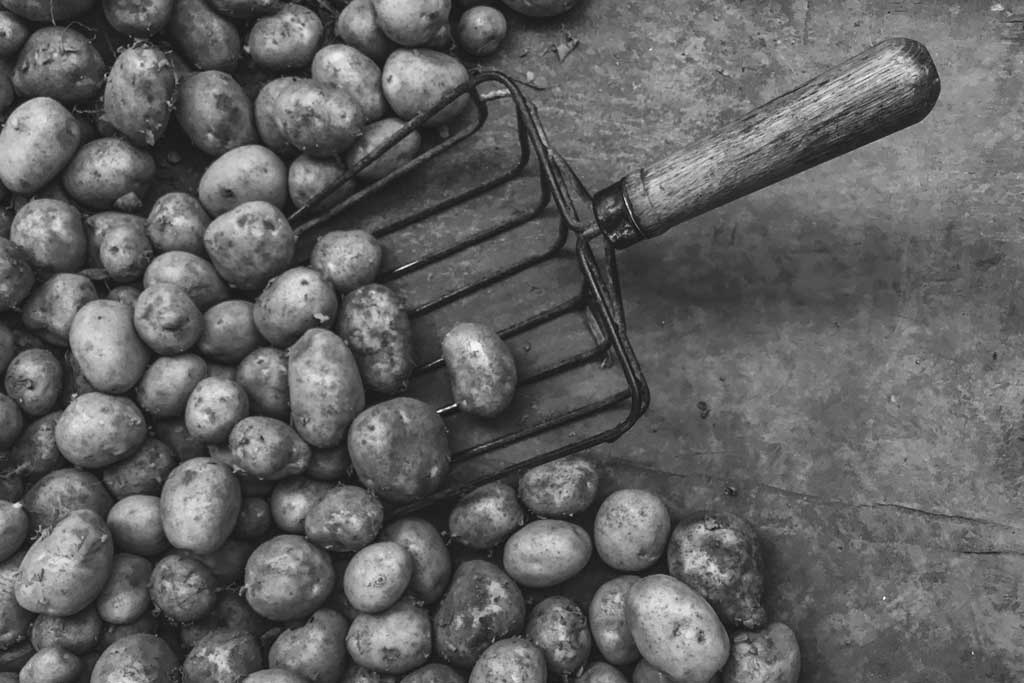
What is poitín made from?
Poitín is traditionally made from cereal grains, starchy vegetables or sometimes whey. Each of these source-ingredients contain sugars either in the form of starch or lactose which can be fermented into alcoholic liquids for distillation.
Cereals such as malted barley, wheat or rye are the most commonly used grains for their high levels of starch. These sugary starches are developed via malting, released during mashing and fermented into alcohol (beer) with the addition of distiller’s yeast.
Potatoes have reasonable levels of starch (though less than cereal grains) but are easily harvested for making poitín. Boiled and crushed to extract their starches, they’re then fermented with yeast for 1-2 weeks. Malted cereal grains such as rye or barley are often also added to aid fermentation.
Sugar beet contains 19% sugar in their natural juices (molasses) and do not require the use of malted barely to aid fermentation. This high sugar content makes them ideal making poitín where the molasses are extracted from the root vegetable via boiling which is then fermented with yeast.
Whey is a less common poitín ingredient. However, Ireland is famed for its dairy production and therefore surplus whey from cheesemaking also became a source-ingredient for making poitín. Separating the milk into curds (solids) from whey (liquids) offers fermentable sugars in the form of lactose. Mixed with a very specific yeast strain, the liquid whey can be carefully fermented into alcohol for distillation.
Depending on the ingredients used, poitín made from cereals, vegetables or whey can have differing flavour, texture, colour and smell. It’s said that potatoes give a wonderful creamy texture on the palate compared to heavier, more oily cereal grain poitín. On the other hand, whey poitín in inherently sweeter due to the lactose.
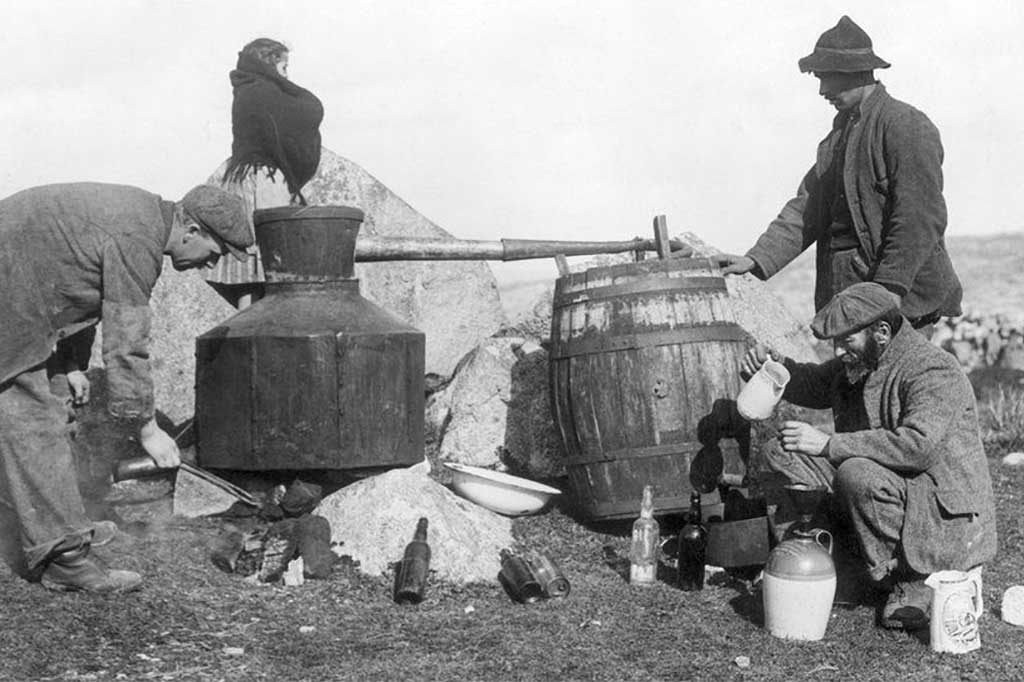
How is poitín made?
Poitín made from cereals, vegetables or whey is made by extracting and fermenting the natural sugars into a sugary liquid known as ‘wort’.
Yeast is added to the wort which feeds on the sugars, fermenting it into a low alcohol liquid called ‘wash’, ranging between 8-15% ABV. To extract and purify this alcohol, the wash is added to a pot still which heats and eventually boils the liquid inside. Alcoholic vapours rise upwards and exit through a lyne arm (hollow pipe) which recondense into a mid-strength alcohol called low wines.
At roughly 25% ABV, the low wines still contain impurities and aren’t strong enough to be considered a spirit. This is why multiple distillations are required to re-heat, re-vapourise and recondense the alcohol, thus purifying it into a much stronger and cleaner alcohol spirit. Poitín.
From 1661, the production of poitín was illegal due to the difficulty of taxing this illicit spirit. It was only in 1997 when it was legalised that licenced distilleries were permitted to legally produce it using more technically advanced column stills. Since then, poitín production has been a growing industry, now boasting worldwide exports.
Poitín equipment
Illicit poitín makers (moonshiners) often make their own stills from various metallic vessels such as old metal drums, kitchen pots or self-fabricated sheet steel and pipes. Individual batches of poitín can be discreetly made with small self-made stills. In the early days, poitín would be made over a fire in remote areas or during windy weather where the smoke couldn’t be easily seen by the Gardai (Irish police).
Commercially produced poitín is made using the more technically advanced method of column stills. These towering tubular vessels enable licenced distilleries to continuously make poitín where ‘wash’ is steadily heated, vapourised and recondensed into highly alcoholic ‘rectified spirit’ no stronger than 94.7% ABV.
How strong is poitín?
The strength of poitín varies vastly and depends whether it’s been cut (diluted) with water. Bottled strength typically ranges between 40% up to as high as 90% ABV. With a maximum distilled percentage of 94.7%, dilution increases batch yield whilst making it more palatable to drink. Good poitín can be sweet and creamy, therefore is best with little to no dilution to enjoy its quality of flavour. Poorly made poitín can be incredibly harsh and dilution can be both easier and safer to drink.
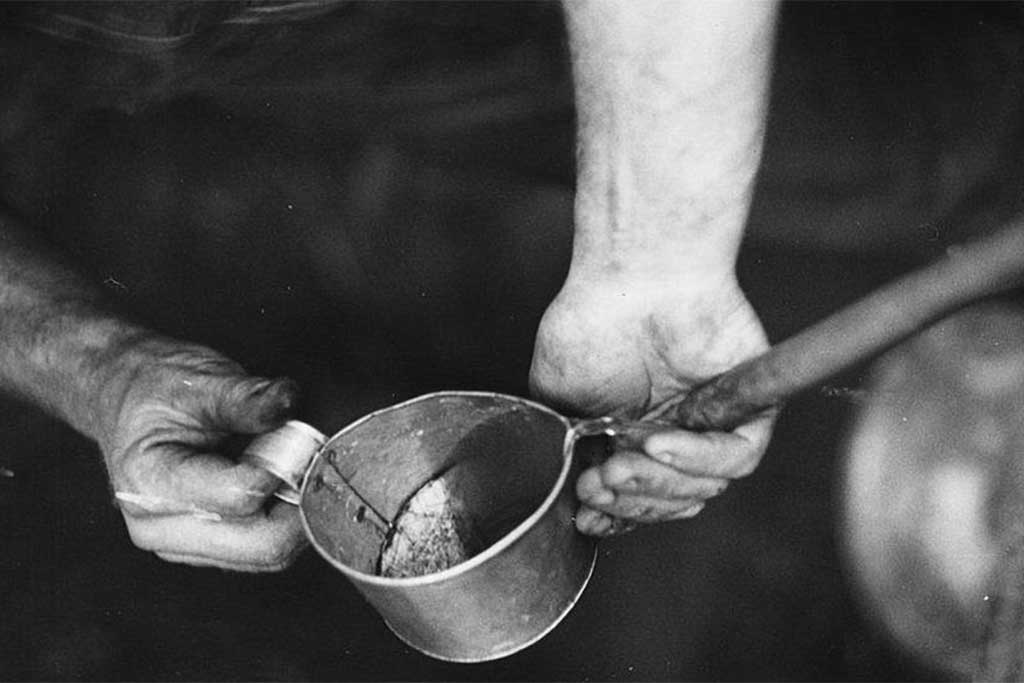
Is poitín the same as whiskey?
Poitín isn’t the same as whiskey and differs for three main reasons;
Poitín can be made from potatoes, sugar beet or whey including small proportions of cereal grains such as wheat, rye, oats or malted barley in the mash mixture. Whiskey on the other hand is made only from cereal grains or malted barley, depending whether it’s a grain whiskey or single malt.
Poitín can also only be matured for a maximum of 10 weeks in wooden barrels, whereas Irish whiskey must be matured for a minimum of three years. This means poitín remains relatively clear in colour, with little addition or extraction of flavour from barrel ageing. This is because poitín must retain the flavours of the raw ingredients used, as defined by the Food Industry Development Division Department of Agriculture, Food and the Marine.
Poitín may also contain additional flavourings or infusions. These can be in the form of indigenous Irish fruits, berries, herbs or spices which can be used to impart flavour (but very little colour). Whiskey however, cannot contain any additional flavourings, relying solely on water, cereal grains and yeast.
A good comparison to keep in mind is that poitín’s flavour is primarily achieved by the raw ingredients before distillation and isn’t manipulated or enhanced with barrel ageing. Whiskey’s flavour is mostly achieved after distillation via single or multi cask maturation which also imparts its golden colour.
7 best Poitíns to try
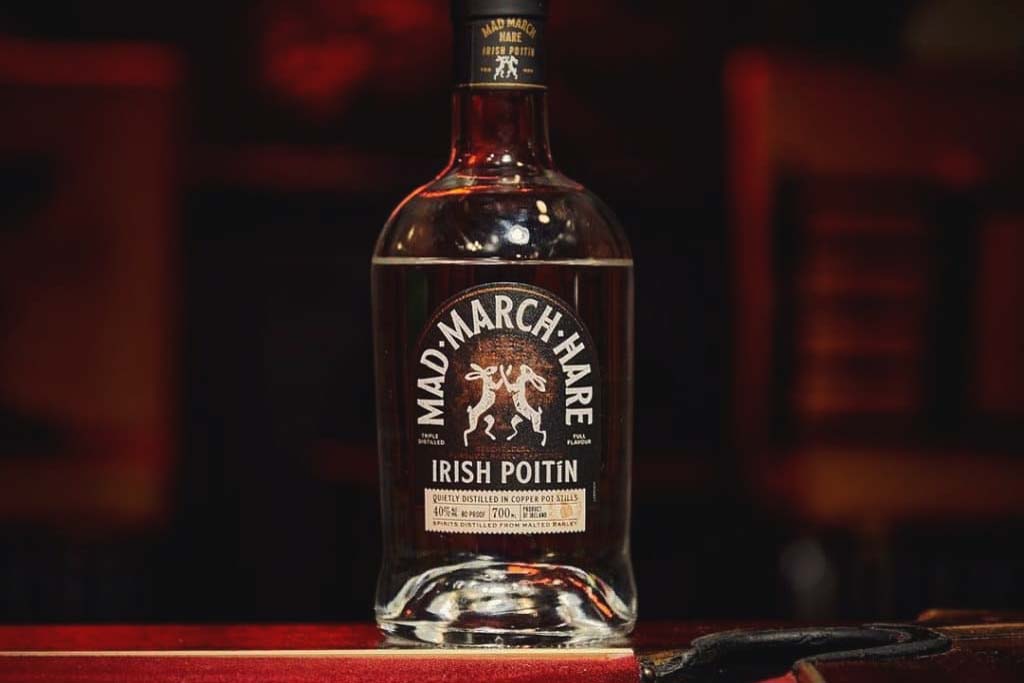
Mad March Hare Irish Poitín
This premium-grade poitín is made from malted barley and is triple-distilled in copper pot stills for an exceptionally smooth taste. The distillation process gives it a distinctive citrus flavour, with notes of lemon and lime dominating, which linger on the palate for a pleasant aftertaste. The elegant finish pairs perfectly with mixers or enjoyed neat. It’s perfect for sipping or creating standout cocktails.
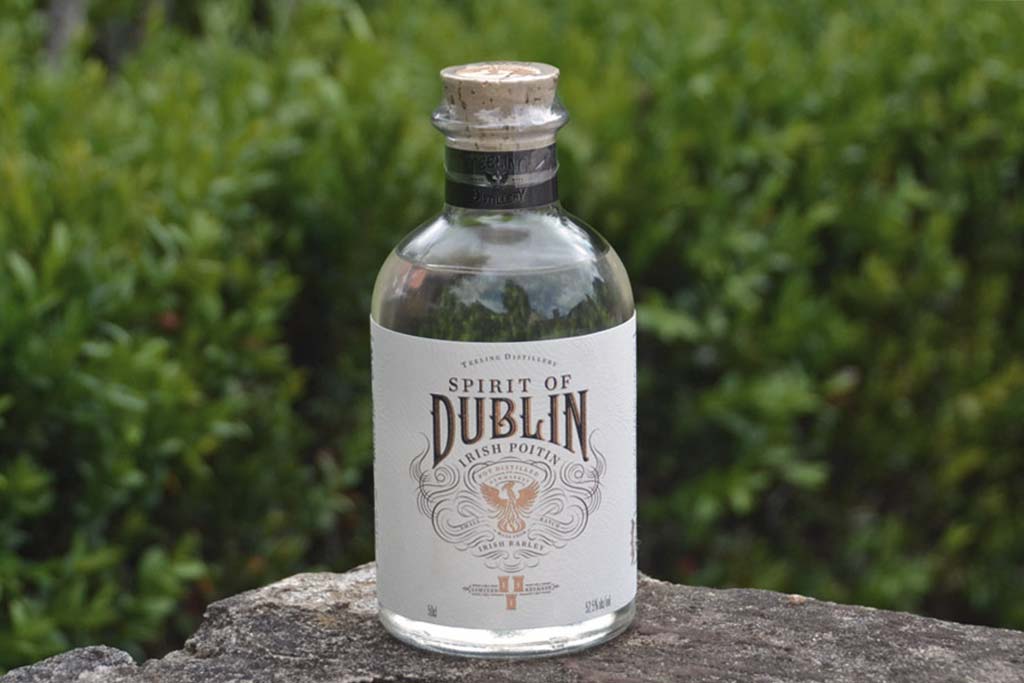
Teeling Spirit of Dublin Irish Poitín
This traditional poitín made at the Teeling Whiskey Distillery in Dublin using copper pot stills and 50/50 mash mixture of malted and un-malted barley. It has a light golden colour with an aroma of sweet barley and citrus. On the palate it offers flavours of honey, floral notes, and spices that linger on the tongue. The finish is long and smooth with a slight hint of oak.
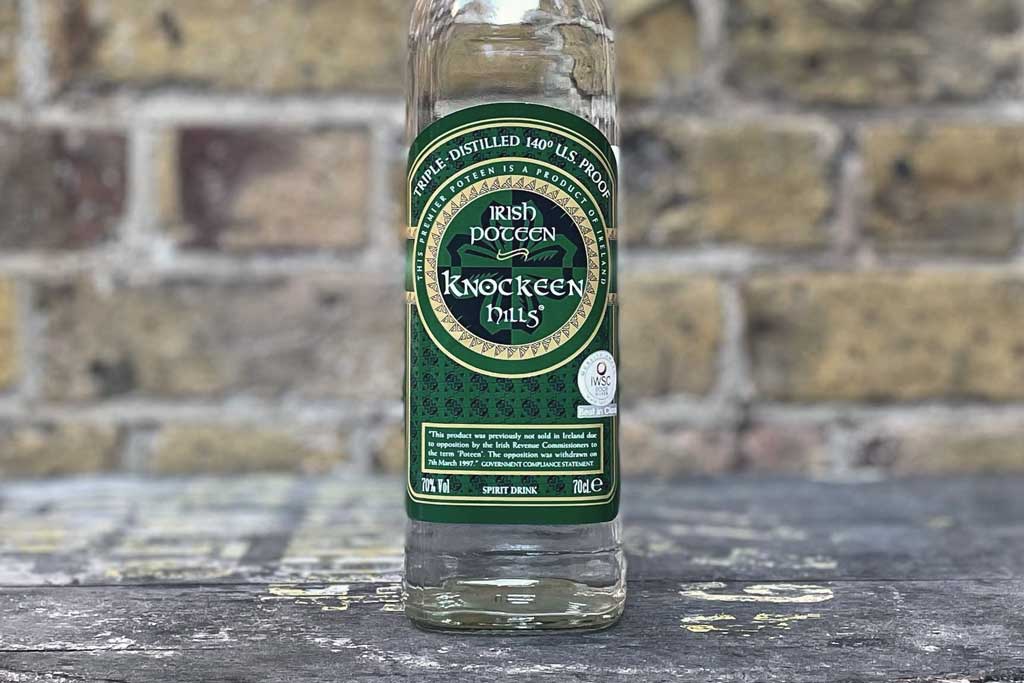
Knockeen Hills Gold Strength Irish Poitin
This Irish Poitín is a triple-distilled, high-proof spirit made in Waterford, Ireland. With an rather punchy ABV of 70% , its aroma is both sweet and herbaceous. On the nose, it offers vanilla and apple notes along with a hint of Brazil nut. The palate is slightly grainy, with an herbal character and a touch of citrus. It finishes warmly, with a lingering dryness on the tongue.
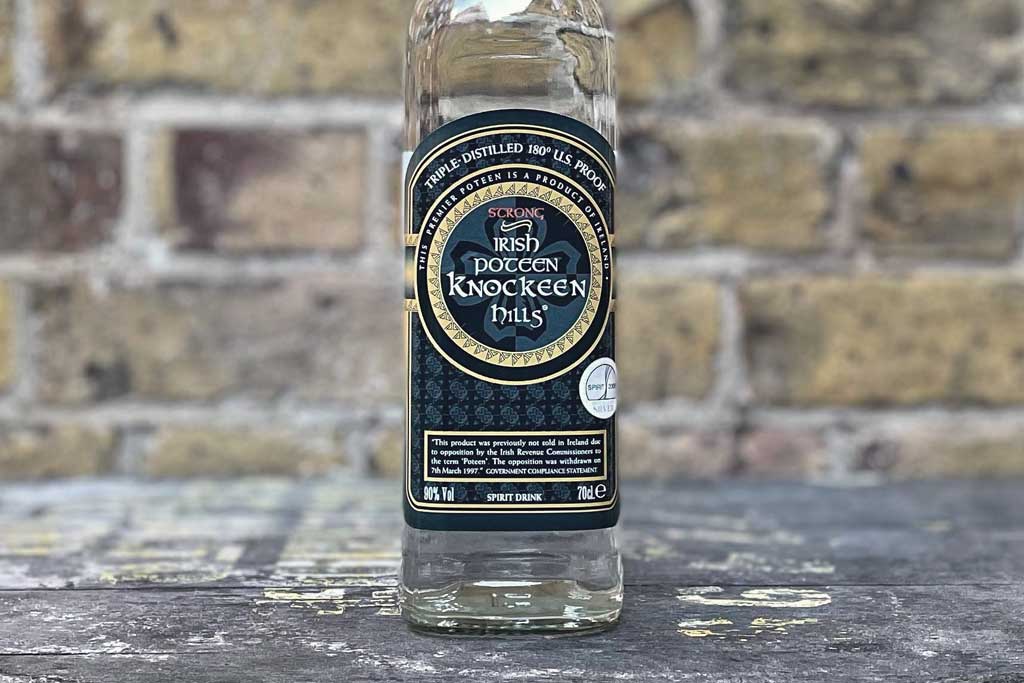
Knockeen Hills Gold Extra-Strength Irish Poitín
An audaciously powerful poitín produced in by the Knockeen Hills distillery in Waterford, Ireland. Interestingly, it’s quadruple distilled and bottled at a whopping 90% ABV, making it one of the strongest on the market. The nose of the Gold Extra Strength is surprisingly fragrant, with aromas of citrus, fruit salad, and ground mixed nuts. The palate is surprisingly sharp and peppery with a heat that lingers on the tongue. The finish is warm and drying.
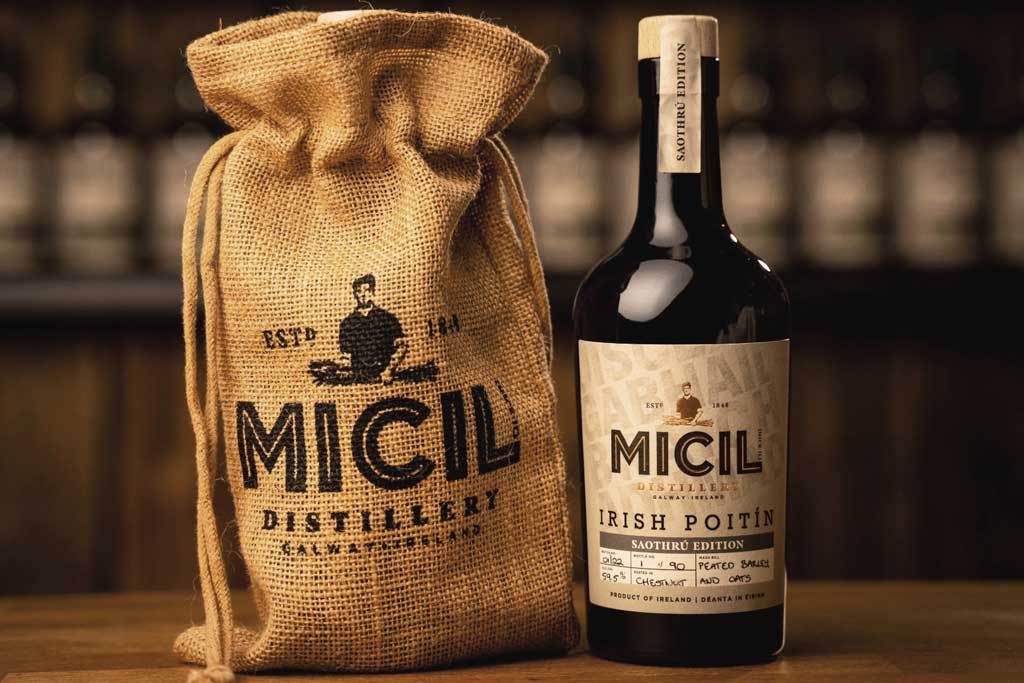
Micil Irish Poitín
A traditional poitín distilled on the beautiful western coast of Galway, Ireland. Crafted by 6th generation poitín makers using grain-based spirits and flavoured with bogbean, Micil Irish Poitín has a subtle floral and spicy kick. With each sip, you’ll experience a mild menthol taste with sweet notes of violet and vanilla, which is balanced by a gentle peppery heat that develops over time.
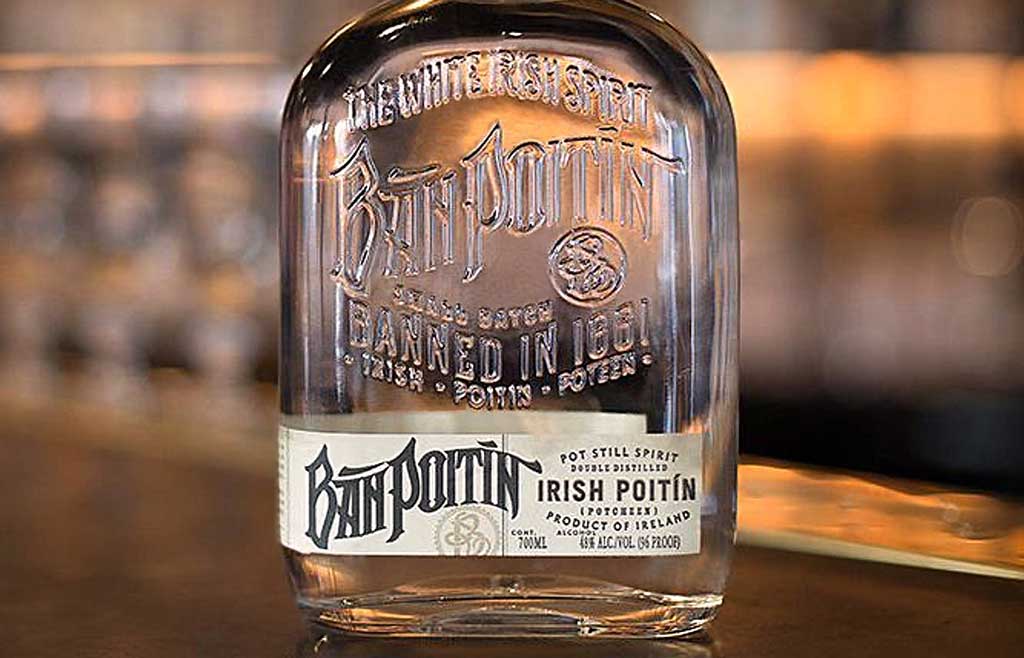
Bán Poitín
A poitín made from a combination of potatoes, malted barley and sugar beets with a strength of 48% ABV. The nose has notes of sour cream and cinnamon toast with rich bready notes such as freshly sliced white bloomer and rye. The palate has an oily texture and is laden with sweet spice including cinnamon toast, clove, and mace. Creaminess builds up complemented by sweet milk chocolate, milky coffee balanced by underlying barrel-char and coffee-ground bitterness. A lovely example of a spiced Irish poitín.
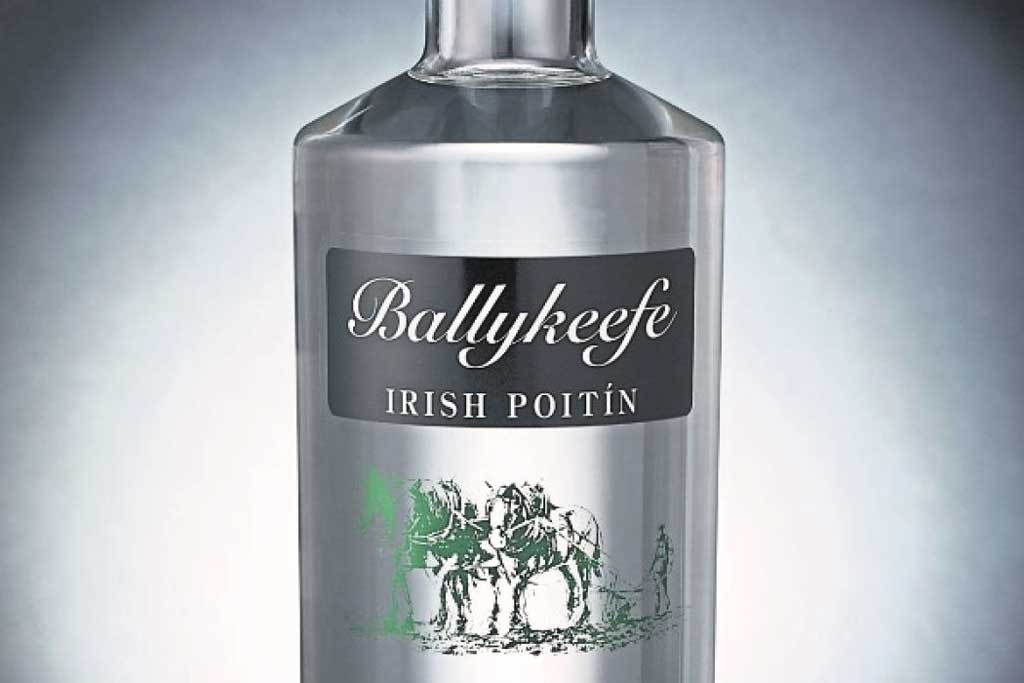
Ballykeefe Poitín
Ballykeefe Poitín is a traditional Irish spirit made from grain and potatoes. It is produced in County Kerry, Ireland, where the Ballykeefe Distillery has been producing poitín for hundreds of years. Its nose has a slight fruity character with a viscous palate of warming malted biscuit, hints of red peppers, and new oak. The finish is long with an oaky sherry finish and a rich buttery feel.
How do you pronounce poitín?
Poitín is pronounced “pot-cheen”. In Irish gaelic, it’s spelled “Póitín” and comes from the word “pota”, meaning ‘pot’. This reflects the traditional method of producing this spirit, which was made in small batches using copper stills. Anglicised iterations of poitín may be spelled as potcheen or poteen which derive from the original Irish word.
What is the best way to drink poitín?
Good quality poitín can be drank neat, without the addition of any water, ice or mixer. On it’s own, straight poitín imparts flavoursome earthy sweetness with a creamy mouthfeel and smooth finish. However, poitín can still be used to make a variety of white spirit cocktails.
Conclusion
As you’ve read, poitín’s roots run deep in Irish history. As a rudimentary form of high-strength alcohol, it’s prevalence is woven amidst folklore, Celtic culture and music. If you ever get the chance to try ‘proper’ home made poitín, be wary of its source and quality. Whilst it continues to be illicitly made to this day, the legitimate versions are a much safer bet – albeit a less thrilling one.


